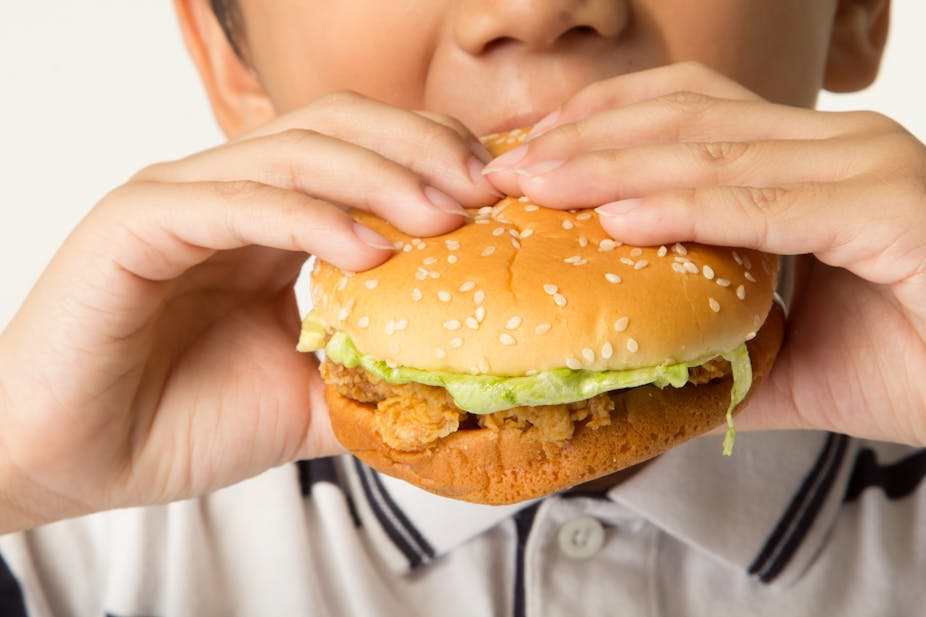More than 60% of UK adults are obese and one in five children start school already overweight – rising to around one in three once children hit the ages of 10 and 11.
Obese children become obese adults, and the resulting costs to our healthcare system are substantial. In 2007, the direct cost of obesity to the NHS was calculated at £2.3 billion. This figure is expected to rise to £7.1 billion by 2050.
Among a raft of measures being considered to try to tackle this problem, further restrictions on advertising junk foods to children are being discussed.
Currently, unhealthy food and drink is frequently advertised to children in “non-broadcast media” – think the internet and billboards – unlike television, where strict regulation prohibits it. However, the Committee of Advertising Practice has launched a consultation to consider a tightening of the industry standards, potentially bringing them more into line with the legislation governing unhealthy food advertising to children on television.
The consultation is also looking at possibly relaxing the “limits” put on celebrities and characters to sell food to children, to allow healthy foods to be advertised in more “creative ways”.
Alongside this, the Local Government Association in England, which represents more than 370 councils, has recently called for councils to be given the power to ban junk food advertising near schools, nurseries and children’s centres.
Under the current system, if councils wish to restrict food and drink advertising near schools they have to apply to the secretary of state, followed by a period of consultation before a decision is reached. This seems ridiculous and burdensome, given the impact we know food and drink advertising has on children’s health – councils need to be able to act with more urgency.
Shaping the future
Children in the UK today are natives of a so called “obesogenic” or “obesity-promoting” environment. This term describes the outcome of a food system that is producing increasing quantities of processed, affordable and effectively marketed food. Simply put, if there is more food, we eat more food – particularly when those foods are persuasively marketed.

Children are very important targets for marketers. They have independent spending power – average weekly pocket money in the UK is now said to be £6.20 and this figure is rising twice as fast as parents’ wages. Children also have influence over family purchases – no parent wants to be the one with a screaming child in the supermarket to contend with. Those children are the teenage and adult shoppers of the future – and any brand loyalty fostered now could reward the food company with a lifetime of sales.
Research has repeatedly demonstrated that this exposure to unhealthy food advertising has an impact on children’s diets. As a result of seeing advertisements for unhealthy foods, children show greater preference for the advertised product, greater preference for high fat and sugar foods in general and, crucially, eat more. Alongside this, the past decade has seen eating outside of the home increase by 29% in the UK and a considerable rise in the number of fast food outlets.
A recent UK study also found that greater exposure to takeaway food outlets – across community, work and commuting environments – was associated with greater consumption of takeaway food, increased body mass index and a higher likelihood of obesity.
Mixed messages
On one hand, we have a National Healthy Schools Programme that promotes healthy eating in schools. But outside school, children are bombarded with engaging and persuasive promotions for junk food on the television, internet, on outdoor billboards and at sporting events.

Arguably, obesity is a normal human response to the “obesogenic” environment in which we live today. It makes sense that if we live in a society which is “producing more processed, affordable, and effectively marketed food”, people are going to end up eating more of the types of food that are being marketed directly to them – but we can do something about this.
The advertising of unhealthy foods to children on TV was restricted in 2007 and may be limited further in the childhood obesity strategy – the health committee’s inquiry into what the Government’s policy priorities should be for addressing childhood obesity. Plus this latest consultation by the Committee of Advertising Practice could look to change the way unhealthy foods are advertised to children beyond TV.
While on this wave of momentum for public health, let’s make it easier for councils to restrict unhealthy food marketing in areas where children spend their time. Blackpool Council is the first in the country to pledge to promote healthy weight in their town and Brighton and Hove have recently unveiled a city wide initiative, committed to reducing the consumption of sugar.
These are both great examples to follow, but we need to see more being done by councils and towns across the country – and this can only be done with the full support of the government. Because at the moment, junk food advertisers are putting profit before children’s health and this needs to stop.

